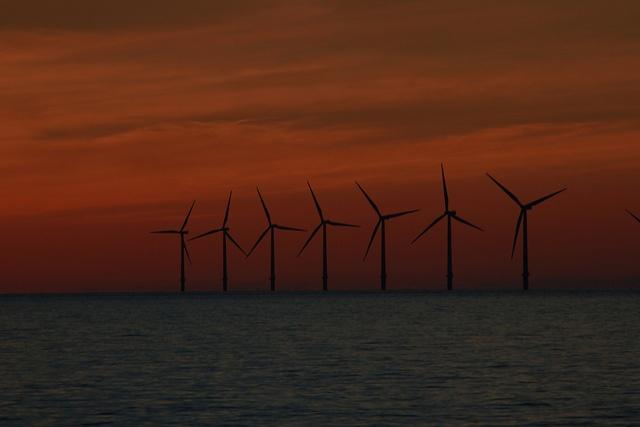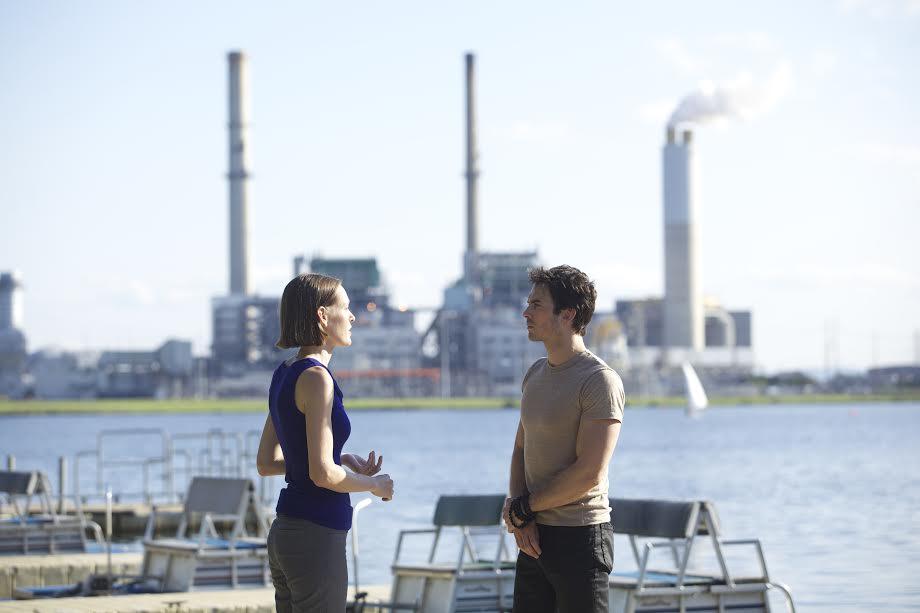Durability: The Missing Piece of the LCA Puzzle


By Jim Weglewski
Product durability is often an under-represented facet of product stewardship. Cradle-to-grave life cycle analysis (LCA) aims to capture the impact of a single product on the environment, from a “supply” point of view.
While informative, a single item LCA obscures the overall impact of the demand life of the product in question.
Consider the common pen. In selecting an environmentally responsible pen, an enlightened person may consider the LCA data associated with material extraction, manufacturing processes, distribution and disposal of different pen options.
Presumably, the pen with the lowest impact numbers would be the responsible choice.
Maybe not. Let’s reconsider this scenario, and begin by defining the “demand life” of a pen as the time span over which the user requires the functionality of the pen. That demand life is close to the typical lifespan of the user, or around 70 years.
We know that more than 1.6 billion disposable pens are consumed every year (where they end up, no one really knows). Informal Internet research shows that individual pen use varies widely. For the sake of argument, let’s say one person consumes 40 pens each year. A demand life of 70 years infers that a single pen with a lifetime of functional durability would replace 2,800 consumable pens.
Given decades of demand life, the most responsible purchase is likely the most durable pen.
Today’s marketplace does not place a high value on lifetime functionality. Durability often requires incremental upfront expense to the user. Our consumption-oriented society relegates such products to niche premium markets.
What makes a product a winner from the demand life perspective? Obvious contributors include inherent material longevity and sturdy functional components. Equally important, but more subtle, factors include amenability to repairs, long-term availability of replacement parts, and a modular design that enables technology upgrades over time.
This ability to mitigate functional obsolescence is a key factor in avoiding premature landfill disposal.
Still, manufacturers will face pitfalls in their quest to extend functional durability. Products made from inherently durable materials may not function durably over an extended period. Flashy, new features attached to durable products can also dramatically shorten their functional lives.
Durable materials can also result in trade-offs regarding the renewability or recyclability of materials. For example, many products derived from petrochemicals are extraordinarily durable; however, they also draw from finite resources and bring end-of-life challenges related to biodegradability and recyclability.
The key is not to view single item LCAs in a vacuum. Manufacturers should evaluate individual product LCAs within the context of the total number of products demanded and produced over time.
That broader contextual lens has helped our team understand that, in many cases, the most significant way we can reduce environmental impacts as a manufacturer is to produce windows and doors that last.
Focusing on durability is not new for Anderson Corp., where I serve as vice president of Corporate Quality, Sustainability and Facilities. We offer long product limited warranties, and continue to have service and hardware available for windows after the warranty has ended. What is new, however, is our understanding of how durability affects our overall footprint.
We are excited about the possibilities catalyzed by this broader view of the LCA puzzle. We believe we can achieve a long-term competitive advantage by collecting the data needed to substantiate and ultimately market the choices we make to extend durability in product development.
We invite other manufacturers to consider this broader model in their own research and development efforts. Some product categories may even find opportunities for truly disruptive innovation. (Imagine a world where the frame of your smartphone lasts 10 years, and you only pay for service and software!)
Most importantly, we ask consumers to demand more durability out of the products they buy. Transformational change will happen when consumers start substantiating that commitment with their dollars.
Image credit: Flickr/fragiletender
Jim Weglewski is vice president of Corporate Quality, Sustainability and Facilities for Andersen Corporation.
Luxury leather brands investigate viability of farmed snake skin


Python farming could help reduce pressure on wild python populations in Asia, finds the first report from the Python Conservation Partnership, a collaboration between Kering, the International Trade Centre (ITC) and the Boa and Python Specialist Group of the International Union for Conservation of Nature.
The report evaluated the economic feasibility and viability of captive breeding of pythons as a possible element of sustainable use and conservation of the species. Its aim is to provide guidance to those involved in the python trade to adopt sustainable practices when sourcing skins.
According to the report, python farming could help reduce pressure on wild python populations. It maintains that the practice should be viewed only as part of a holistic approach to python conservation and additional research on python farming and trade is required to determine its conservation benefits and impacts on livelihoods. The report also found that greater emphasis on the conservation of python species in the wild is needed.
Key recommendations from the report include putting in place systems to ensure that python farming is well documented and that any trade is sustainable, legal and does not encourage trafficking from the wild under the guise of farmed animals. The study also highlights the urgent need to develop techniques to differentiate between captive-bred and wild-caught skins. The Python Conservation Partnership is currently addressing this issue by working with Viet Nam to research innovative ways to determine whether skins are derived from captive-bred or wild sources.
“Our drive and commitment to sustainable business includes going deep into sustainability across our supply chains, right to our sources,” said Marie-Claire Daveu, chief sustainability officer and head of international institutional affairs of Kering, the luxury group whose brands include Gucci, Balenciaga and Bottega Veneta. “This first report and the continued work we are doing in the Python Conservation Partnership to enhance traceable, sustainable sourcing and the conservation of pythons will assist our sector and move the industry towards more informed decisions in python sourcing. We will be proactive in addressing these recommendations, and in particular developing best practice guidelines in the PCP for captive breeding farms and training the suppliers we work with."
Python skins are traded primarily to meet demands from the fashion industry to make luxury leather products, with Italy, Germany and France being the biggest importers. Skins are also used for traditional Chinese musical instruments. Indonesia, Malaysia and Viet Nam are the main source of python skins, with China, Thailand and Viet Nam all producing python skins through farming.
Picture credit: © Creativemarc | Dreamstime.com
3p Weekend: 5 Celeb-Backed Green Marketing Campaigns We Can Actually Get Behind


With a busy week behind you and the weekend within reach, there’s no shame in taking things a bit easy on Friday afternoon. With this in mind, every Friday TriplePundit will give you a fun, easy read on a topic you care about. So, take a break from those endless email threads, and spend five minutes catching up on the latest trends in sustainability and business.
Celeb-backed environmental campaigns are often sigh-inducing displays of greenwashing, but we're all for giving a pat on the back when things are done right. Campaigns incorporating celebrities can bring the conversation to a far wider audience -- an ultimate necessity if we hope to move the needle forward on issues like climate change and ocean health. With that in mind, this week we rounded up five celebrity-backed green marketing campaigns that we can actually get behind.
1. Leonardo DiCaprio buys a racing team to spur EV adoption
Actor and longtime environmental activist Leonardo DiCaprio joined forces with high-performance electric vehicle manufacturer Venturi Automobiles late last year to enter a racing team in the the new FIA Formula E Championship, the world’s first fully-electric race series. The Oscar nominee's name generated a great deal of buzz around the series and the concept of high-performance EVs in general -- which seems to be just what he and Venturi had in mind.
“The future of our planet depends on our ability to embrace fuel-efficient, clean-energy vehicles,” the actor said of the partnership. His Venturi car will face off against Sir Richard Branson's Virgin Racing team in September, which is a clean tech showdown we can't wait to watch.
2. Adrian Grenier's SHFT woos the masses with shareable media
It seems whenever an eco-minded celeb is needed for a speaking gig, whether it's SXSWeco or Ford's annual trends conference, Entourage star Adrian Grenier is there to foot the bill. But beyond helping companies urge average pop culture buffs to give a hoot about the environment, Grenier is making waves in the sustainable business scene in his own right. His SHFT.com multimedia project, founded with business partner Peter Glatzer, drew the attention of partners like Ford, Virgin America and Stonyfield Organic -- who all view it as a high-profile means of raising awareness around environmental causes like electric vehicle adoption and food justice.
3. Pharrell Williams signs on to design shoes from ocean waste
If you haven't heard, singer, songwriter and producer Pharrell Williams owns his own textile company (seriously). Called Bionic Yarn, the company is part of The Vortex Project, an initiative with Parley for the Oceans to turn plastic ocean debris into yarn and fabric.
Earlier this month, Williams signed a deal with clothing maker G-Star RAW to design a line of denim made from the ocean waste-derived fiber. And yesterday he announced that he'll do the same with adidas -- designing a line called Originals x Pharrell Williams set to debut this summer. While creating consumer products from ocean waste is nothing new to those familiar with sustainability, Williams' famous name surely brings a new audience to the table -- which, to drop one of the artist's top hits, makes us pretty happy.
4. will.i.am teams up with Coke to promote recycling
Back in 2011, musical artist and producer will.i.am teamed up with The Coca-Cola Co. and other brands to launch EKOCYCLE. The stand-alone brand initiative is dedicated to helping encourage recycling behavior and sustainability among consumers, particularly youth, through "aspirational, yet attainable lifestyle products" made in part from recycled material. The line has already featured Beats by Dr. Dre headphones, New Era hats and Levi's jeans that "close the loop" by using recycled feedstocks to create products that consumers actually want to buy.This year the artist, Coca-Cola and Global Citizen are promoting the EKOCYCLE #ADayWithoutWaste campaign to encourage consumers to recycle and reduce household waste. Scheduled for April 9, the recycling campaign aims to inspire people to look at everyday patterns of waste consumption in an effort to make even the smallest change that will result in environmental protection. If everyone took the pledge to reduce even one piece of waste this year, imagine what we'd achieve.
5. Top names put a face on the victims of climate change
Years of Living Dangerously, a documentary series set to premiere April 13 on Showtime, provides a compelling introduction to the people and places affected by climate change.Drawing top top names like executive producer James Cameron, actresses Jessica Alba and America Ferrera, and actors Matt Damon and Harrison Ford, the series aims to put a well-known face on climate change victims -- as celebrity correspondents interview everyday Americans and local NGOs. Filming locations include Duke Energy’s Asheville coal plant, the Asheville Beyond Coal rally and Charlotte, N.C.
The impacts of the film are yet to be seen, but handing the mic to everyday people, who continue to struggle with the effects of climate change and pollution but are often forgotten by the media, is a great idea in our book.
Images courtesy of Venturi Automobiles and adidas
Based in Philadelphia, Mary Mazzoni is an editor at TriplePundit. She is also a freelance journalist who frequently writes about sustainability, corporate social responsibility and clean tech. Her work has appeared on the Huffington Post, Sustainable Brands, Earth911 and The Daily Meal. You can follow her on Twitter @mary_mazzoni.
Renewables Account for 92% of New Capacity, Still a Slow Start Compared to 2013


Wind and solar power proponents are hailing the Federal Energy Regulatory Commission’s latest report on energy infrastructure. According to the FERC’s February 2014 report, renewable energy topped the list for new energy installations during January and February. Approximately 92 percent of the new installations for energy production during the first two months of the year were for solar, wind, biomass hydro or thermal power generation.
Those numbers include 25 new solar plants, six wind farms, two hydro* and three geothermal plants. New wind installations include the Pheasant Run project in Huron County, Wis. (75 MW), which will generate electricity for DTE Energy Co., and the Fort Hays University's installation in Ellis County, Kan. (4 MW), to power services at the university. Solar includes a wide range of projects, including four installations by Recurrent Energy totaling 73 MW to generate power under contract for Southern California Edison.
In comparison, fossil fuel-based infrastructure installation was almost nonexistent for January and February, with only one natural gas facility brought online.
Not all of the news was encouraging, however. Solar and wind installations were about half what they were for the same time in 2013, which saw 46 solar and nine wind construction projects installed. While there were no new geothermal plant installations for those two months of 2013, water (four projects), biomass (27 projects) and waste heat (one project) took up the slack. That was also a good period for the natural gas industry, which saw six new installations and oil, which completed two for that period of 2013.
But renewable energy supporters aren’t letting this year’s comparatively slow start get them down.
"Only flat-earthers and climate-deniers can continue to question the fact that the age of renewable energy is now here," said Ken Bossong, executive director of the nonprofit research and educational organization Sun Day Campaign. He points out that the generating capacity for solar, wind and biomass now accounts for 16.14 percent of the country’s total generating capacity in operation.
“This is more than nuclear (9.26 percent) and oil (4.05 percent) combined,” says Bossong, who included the reminder that generating capacity shouldn’t be confused with actual generation of renewable energy, which currently stands at “about 13 percent” (Dec. 2013, Energy Information Administration).
* An additional 7 license applications for hydropower (70 MW) were also filed in February for US Army Corps of Engineers facilities already located on the Monongahela and Allegheny Rivers in West Virginia and Pennsylvania. The FERC report does not define what it considers to be renewable energy, and hydroelectric power remains a debated contender for that classification in some states. For a complete breakdown of energy sources for January and February, see the FERC report for Feb 28.
Image credit: Mees Photography
Undeterred By Facts, Climate Deniers Will Carry the Torch to Las Vegas


Why, you might ask, when the verdict is in, the scientists overwhelmingly agree, and the evidence is incontrovertible, are they still at it?
This pie chart sums it up pretty nicely. Of the 2,258 peer-reviewed papers that have been published on the subject of climate change between November 2012 and December 2013, representing the positions of 9,136 authors, exactly one of those, written by a single Russian scientist, rejected the idea that climate change is caused by human activity.
This summation was published in a review paper authored by geochemist James Lawrence Powell. Powell, who is a past president of Franklin & Marshall, Reed and Oberlin colleges, has posted a database listing every one of the articles online, and he invites anyone to examine the list. It would be interesting to see if they can draw a different conclusion from it other than overwhelming consensus.
The one outlier, written by S.V. Avakyan, attributes the changes to our climate, which would include the fact that 13 of the hottest years on record occurred this century, to changes in the sun’s output. Numerous other reports have studied the same phenomenon and drawn different conclusions.
At a meeting last week in Japan, a group of 60 scientists representing a subgroup of the U.N. Intergovernmental Panel on Climate Change (IPCC) gathered to assess the expected impacts from global warming. The group is expected to issue a report soon.
Based on interviews and comments by authors, the key message will be that the risks and impacts of climate change are far more immediate and local than scientists once thought. There is far more at stake than melting ice, threatened animals and endangered plants. Climate disruptions will increasingly exacerbate the human problems of hunger, disease, drought, flooding, refugees and war.
"Climate change really is a challenge in managing risks," says the report's chief author, Chris Field of the Carnegie Institution of Science in California. "It's very clear that we are not prepared for the kind of events we're seeing."
The effects of global warming are already "widespread and consequential," says the report, noting that science has compiled more evidence and done much more research since the last report in 2007.
Last week also saw a report issued by the American Association for the Advancement of Science. The wording came as close as a scientific institution can to screaming an alarm. "As scientists, it is not our role to tell people what they should do. But human-caused climate risks abrupt, unpredictable and potentially irreversible changes."
But none of this has stopped or even slowed down the professional skeptics. In fact the Heartland Institute just announced the 9th International Conference on Climate Change at the Mandalay Bay Hotel and Casino in Las Vegas. The event is being billed as an “International Gathering of Scientists Skeptical of Man-Caused Global Warming.”
The announcement claims that “hundreds of the world’s most prominent ‘skeptics’ will converge” at the event. Apparently not many of these skeptics have been publishing peer-reviewed papers. No word yet on whether Mr. Avakyan will attend. Among the expert speakers giving lectures will be a medical officer from a Texas sheriff’s office and an architecture professor.
Climate skeptic blogger Willis Eschenbach, whose credentials include a massage therapy certificate and a B.A. in Psychology will also be speaking. Another speaker, Chistopher Monckton is a non-scientist who claims that global warming is a non-problem. Also speaking will be Marc Morano, a former staffer for Sen. James Inhofe, and Fred Singer, who has been called the “granddaddy of fake science.” After being wrong about both the safety of cigarette smoking and the significance of the hole in the ozone layer, he is now apparently going for a hat trick. Both Morano and Singer were profiled in Rolling Stone as one of 17 “climate killers.”
Of course, it matters little who will be speaking or what they’ll be saying since the audience will be self-selected as a group consisting in the main of those who do not listen, cannot read and are either incapable of, or uninterested in, critical thinking.
Previous versions of this conference have been heavily funded by ExxonMobil, the Koch Brothers and the conservative Scaife Foundation, receiving as much as $67 million from these groups. This year's event is likely to be little different.
Which, of course gets us to the point of circle-jerk events like this one. It’s big oil behind the scenes, keeping that steady drumbeat of doubt going. Doubt and inaction go hand in hand. It’s the one thing that juries can’t convict a criminal with even the shadow of. And for the millions of people who don’t read the actual science because they lack the education or the interest, this echoing of doubt through the hills, repeated and amplified by Fox News will serve as a proxy for understanding -- when understanding is nowhere to be found. This will allow the legions of Fox-watching red state voters to slumber on, undisturbed by any qualms that carrying on with business-as-usual should be any more of a concern for them than it was for their grandparents -- allowing them to pull the lever in November for Status Quo, and Big Oil will see record profits once again.
Nick Cohen at the Guardian claims that the deniers have already won. Perhaps the fact that we are even having this conversation in 2014 supports his assertion. Of course, the part that they won’t figure out until it’s too late is that if they win, we all lose.
The fact that by doing all they can to suppress effective action on greenhouse gas emissions means, of course, that they are gambling with the future of the planet, in hopes that the one guy out of 9,136 was right. What better place to do that than Las Vegas?
Image credit: Moyan Brenn: Flickr Creative Commons
RP Siegel, PE, is an inventor, consultant and author. He writes for numerous publications including Justmeans, ThomasNet, Huffington Post, and Energy Viewpoints. He co-wrote the eco-thriller Vapor Trails, the first in a series covering the human side of various sustainability issues including energy, food, and water in an exciting and entertaining romp that is currently being adapted for the big screen. Now available on Kindle.
Follow RP Siegel on Twitter.
How LinkedIn Can Help You Score a Sustainability Job


By Shannon Houde
Unless you've been hiding under a particularly large rock for the past five years, you'll know that LinkedIn is the social media account for people who want to make the most of their careers and professional networks.
But did you know that 97 percent of human resources and staffing professionals use LinkedIn to search for candidates and that 77 percent of all job openings are posted there? Making the most of your LinkedIn profile will be one of the best investments you'll make in your job search and ongoing career and network development.
First, a true LinkedIn success story: My husband (and “client”) was targeted through a LinkedIn second-degree contact for his automotive and finance sector expertise. Now he has reinvented himself from an automotive investment banker to a Silicon Valley VC automotive technology guy -- all through LinkedIn.
- Together these two started a successful automotive technology venture capital fund with an eight-hour time difference and without meeting in person until six months and 500 hours had been invested.
- Meanwhile, he wanted to gain board experience in the electric vehicles sector and through LinkedIn found a leading European player, Pod Point, who needed his business development and finance expertise to grow.
- He was also targeting a specific automotive company for a full-time role, so I hopped onto my LinkedIn contacts and did a company search to see who I knew there. Within 24 hours we had a live meeting for him with the head of the U.K. division to brainstorm ways to grow their brand across the country. A week later he had also brokered a meeting between them and Pod Point.
Synergies of match-making on a powerful platform! This just goes to show how powerful LinkedIn can be for getting found, linking others together and finding career opportunities, not to mention…making new friends in your sector and beyond.
But first...
Before you put fingertip to keyboard, take a few minutes to read and digest the following five tips.
- You've got one chance to make a good impression, so make it count by crafting a compelling and relevant story about who you are and what you do. You can't customize your profile to fit a plethora of job types -- it's one size fits all -- so be clear on what you're selling and to whom.
- Keep it short and simple. LinkedIn is not a digital version of your paper CV! Attention spans are short online, so use searchable keywords and avoid long paragraphs. Bullet points are your friend.
- Think like an advertiser and promote yourself. Don't be shy, tell the world about your achievements and back them up with proof.
- Smile. Yes, you are on camera! Get yourself an appropriate photo. I think black-and-white shots with a clean background, preferably taken by a professional, look best.
- Prepare to network. Particularly for CSR and sustainability roles, where job titles are non-traditional and a lot rides on reputation. Reaching out to people in your field (or the field you want to get into) through groups or companies you follow will help you get noticed.
Your profile checklist
Whether you've already got a profile or are creating one from scratch, use this step-by-step guide to proof your content and make sure it screams, "Hire me!"
- A professional profile photo A bad photo or none at all is the No. 1 mistake jobseekers make. Yours should be a headshot on a black or white background, with a comfortable and approachable expression. Put your best face forward!
- An attention-grabbing headline It's the first thing people see, so use these 120 characters to describe your industry, skills and objective, and don’t be afraid to announce your job search right there in your headline (unless of course you don’t want your current employer to know you are looking). This is not your job title and company name.
- An engaging, keyword-rich summary Write a 100-word sales pitch in the first person, using a conversational tone. It should provide the same information as your half-page bio or four-line profile section of your CV. Then list your specialties using searchable keywords, including industry, skills, interests, and past and potential job titles.
- A detailed job history Give bullet-point descriptions of previous roles and impressive-sounding accomplishment statements that demonstrate your achievements (using the '>' symbol). Back up your claims by uploading samples of your work: reports you edited, press releases about your projects, slideshows of presentations you've delivered. Make liberal use of the "add a link" function too.
- Highlighted accomplishments Publications, volunteering, courses, honors and awards, languages... Fill out all sections that apply, and reorder them so the most relevant and impressive sections are at the top.
- Positive recommendations There’s nothing better than positive recommendations to reassure a potential employer. Aim for at least one recommendation for every job you’ve had.
- Relevant groups Showcase your knowledge and engagement in the sustainability field by joining relevant groups. Use the search bar at the top of LinkedIn to search for groups in your local area, as well as in your niche industry.
And finally...
Try out my three killer tips for a strategic job search. These sneaky suggestions will help you target your efforts for maximum impact.
- In LinkedIn, click on the Advanced Search option, select "people" and set the location to your country. In the "title" field, type HR, human resources or recruitment. From the drop-down menu, select "current." Up will pop a list of hiring managers in your network. Use the "company" and "industry" fields to narrow down your search... and get networking!
- Identify a few "dream companies" you'd love to work for, search for them on LinkedIn, and hit follow. You'll automatically be updated of any vacancies they post in your news feed.
- Log on to SimplyHired.com, type in your job search criteria, and when the results display, look in the top right-hand corner. You'll notice the "Who Do I Know?" box. Turn it on, allow access to your LinkedIn account, and watch your contacts magically appear under each posting. Now you know exactly who in your network to target for an internal referral!
Happy job-hunting folks, and don't forget to contact me for a personalized 25-point critique on your LinkedIn profile and some expert advice on how to improve it.
Image courtesy of Terry Chay, via Flickr Shannon Houde is founder of Walk of Life Consulting, the first international career coaching business focused solely on the environmental, sustainability and corporate responsibility fields.
The Economic Case for Peace


The conventional wisdom used to hold that nothing was better for an economy than war. Pretty cynical view, built on the notion that the Second World War allegedly helped lift the U.S. out of the Great Depression and, thankfully, a view that has been thoroughly debunked.
Last month, a report from the Institute for Economics and Peace (IEP), further makes the case that violence, in all its forms, is economically devastating and downright bad for business (unless, of course, one is in the business of war).
In its report, titled “The Economic Cost of Violence Containment,” the IEP seeks to quantify the global economic cost of violence in 2012 by assessing “violence containment spending” (VCS), which it defines as as economic activity related to either (i) the consequences or (ii) prevention of violence, where the violence is directed against people or property. The report estimates that the total economic impact of violence containment to the world economy in 2012 was roughly $9.46 trillion, or 11 percent of Gross World Product.
This is more than 75 times the amount of foreign aid distributed worldwide in 2012, and just 15 percent of this figure would be enough pay for the completion of the remaining U.N. Millennium Development Goals, repay all of Greece’s outstanding debt and fully endow the European Stability Fund.
The IEP report breaks down VCS by country, in both raw dollars and as a percentage of Gross Domestic Product (GDP). The countries that spent the most on VC, as a percentage of GDP, in 2012? Not terribly surprising, and something of a "who's who" of the world's poorest, most violent and most poorly governed states: North Korea (at 27.5 percent of GDP); Syria (23.8 percent); Liberia (22.7 percent); Afghanistan (21.2 percent); and Libya (19.6 percent). Seeing North Korea atop the list is hardly gasp-inducing, but seeing that its government spends more than a quarter of its GDP on violence containment is, to me at least, still quite disturbing (despite what the North Korean propagandists would have us believe).
The effects of the wars in Syria, Afghanistan and Libya are still being felt economically, as those states continue to pour money into military operations; and Liberia is, well, Liberia. The “developed" country that spent the most on VCS in 2012? The good 'ole U.S. of A, at 10.5 percent of GDP (again, devastating but predictable). Bhutan, the jolly former-monarchy known for its Gross National Happiness standard, spent the least (0.5 percent), followed by Iceland, Laos, Switzerland and Bangladesh (all under 2 percent of GDP).
To underscore just how economically detrimental violence is to the state, the IEP applied a “peace multiplier” to its figure: For every dollar saved on violence containment, it assumed that there would be an additional dollar of economic activity. So, the actual spend on VC activity in 2012 was $4.73 trillion, and the IEP assumed that it cost the world economy an additional $4.73 trillion in economic activity that would otherwise have come from the reinvestment of these costs into “more fruitful” activities.
It is clear, therefore, that violence is detrimental to states. Take Somalia, for example, which the IEP calls “the clearest example available of the worst-case scenario of long term conflict and insecurity and its impact on economic growth and human development and potential.” Somalia’s economic stagnation, attributable to poor (or nonexistent) governance and continued instability, has “undermined any prospect for even short term economic growth.”
Contrast Somalia (and others, like the aforementioned war-torn states of Syria and Afghanistan) with a state like Nepal, which demonstrates that the costs of engaging in a peaceful settlement, through processes such as mediation and truth and reconciliation, are relatively inexpensive when compared to the exorbitant costs of conflict. The war between the government of Nepal and the Communist Party, which raged from 1996 to 2006, saw more than 13,000 people killed and cost Nepal’s economy more than $3 billion (per the IEP’s methodology). This is in stark contrast to a recent estimate of the total cost of the peace process in Nepal by the Nepal Institute for Policy Studies, which put the price tag of the conflict resolution at approximately $207 million (or less than 10 percent of the cost of the war).
What, then, are the implications for individual businesses, particularly multinationals? The IEP report is relevant in a few ways, and further makes the business case for human rights compliance and corporate social responsibility programs. For instance, the fourth largest contributor to VCS in 2012 was spending on private security services -- i.e., money spent on security personnel employed by private entities, such as security guards employed by businesses -- which accounted for 6 percent of total VCS in 2012, behind only military spending (51 percent of the total); the cost of homicides (15 percent); and internal security costs, e.g., police (14 percent).
Moreover, the report did not account for some of the other costs associated with private measures, such as insurance premiums or the cost of surveillance equipment, which would be borne primarily by businesses. And all of this, of course, ignores the existential threat that violence poses to a business and its employees, and does not account for the costs of litigation that may arise from a business attempting to continue its operations in the face of violent opposition. Businesses, therefore, would be wise to follow the guidance of the U.N. Global Compact, which suggests that businesses be aware of and apply “conflict resolution and peacebuilding strategies,” because often, “promoting peace is an essential element of successful business operations.”
In other words, unless you’re Lockheed, it looks like Edwin Starr was right.
Image credit: Flickr/beate_meier
New $30M Financing Vehicle Helps Create a Mid-Market for Energy Efficiency Projects


Energy efficiency projects and financing are moving down-market – in the sense that they're increasingly attractive to and viable for medium- and even small-scale commercial and industrial companies, as well as government departments and agencies.
Taking advantage of ongoing advances in clean technology and applying some creative financing, innovative companies such as Noesis Energy are creating new markets and growth opportunities for energy efficiency project developers and energy service companies, as well as offering small- and medium-sized businesses (SMBs) the opportunity to boost their bottom lines while also reducing their environmental impact and carbon footprint.
Performance-based energy efficiency financing
On March 26, Austin, Texas-based Noesis announced the launch of a $30 million fund to finance Noesis Shared Service Agreements (SSA).
Akin to the solar power purchase agreements that have driven explosive growth in third-party-provided residential, commercial and industrial solar photovoltaic (PV) systems, the Noesis SSA is a “performance-based investment vehicle to finance mid-market energy efficiency upgrades and retrofits in the commercial and industrial sector.”
As Noesis explains in its press release, energy efficiency projects (until recently) have largely been the domain of large energy service companies specializing in delivering multimillion dollar “turnkey” energy savings projects to government customers.
Back in October 2009, President Barack Obama made reducing greenhouse gas emissions and boosting energy efficiency throughout the federal government – by far the largest consumer of energy in the nation – a priority with the issuance of Executive Order 13514.
Noting advances in a range energy efficiency and renewable energy technology for building and larger facilities – LED lighting, heating and cooling systems, distributed and co-generation, net metering and intelligent energy management controls among them – and the success of solar PPAs, Noesis Energy saw an opportunity to expand and move energy efficiency into the mainstream by creating a middle-market tier.
Its first step came last year with the launch of a financial services unit to help its commercial and industrial business customers obtain third-party financing for small to mid-sized energy efficiency projects and retrofits. Noesis Financial Services has since signed up over 30 energy efficiency product and service providers, and quoted more than $37 million in projects, according to the company.
The Noesis Shared Service Agreement
With $30 million worth of initial capital underwritten by an unnamed “leading provider of energy efficiency financing,” Noesis aims to take its energy efficiency financing capabilities to a higher level by offering a performance-based, and hence off-balance sheet, means of financing that matches the actual energy savings customers realize to their SSA payments.
"Aligning the financing with the actual energy savings realized has been a model that has been hugely successful in residential solar. With Noesis Shared Savings Agreement, we're applying that same model to the commercial and industrial energy efficiency market, only at a much larger scale," Noesis Energy CEO Scott Harmon was quoted as saying.
Payments for "negawatts"
Noesis SSAs can range from $500,000 to $3 million, with project payback periods of less than 7 years. Noesis stands between the energy efficiency project developer, equipment or service provider and their commercial or industrial company customers. Project developers are paid 90 percent of contract value upon successful installation and the remainder over the term of the SSA based on the actual energy savings realized by the customer – known as "negawatt" pricing.
Noesis vets the energy efficiency project developers' credit before they can sign on to offer Noesis SSAs, sets industry-standard specifications for installations and their performance, and then assesses them over time in the context of the SSA contracts.
Noesis Energy is one of the first, but not the only company, looking to capitalize and grow the energy efficiency market. As Matt Golden, senior energy finance consultant for the Environmental Defense Fund's (EDF) Investor Confidence Project (ICP), highlighted:
"This new shared savings vehicle from Noesis is the latest example of technology-based underwriting closing the gap between energy efficiency projects and innovative financing. This new financing option is a great example of how standardizing and streamlining the technical underwriting process can connect capital sources with a stream of consistent and reliable energy-efficiency project deal-flow."
Joule Assets in late January launched a planned $300 million to $400 million ERA (Energy Reduction Assets) Fund that's helping SMBs realize energy savings and boost energy efficiency by investing in the same sorts of projects as Noesis will finance with its SSAs.
Similar to the Noesis SSA, Green Charge Networks is offering a growing range and roster of clients performance-based Power Efficiency Agreements (PEAs) that are based on the energy bill savings realized by customers who install its GreenStation intelligent demand management-battery storaage system.
Commented Infinilume Corp. CEO John Byers:
"No budget and lack of trust in savings forecasts are two of the most common reasons why CFOs don't approve energy efficiency projects. The Noesis SSA allows you to overcome both objections by providing third-party financing where the building owner only pays if the project delivers the promised savings. We believe the Noesis SSA is the financing vehicle that can significantly unlock the commercial mid-market energy efficiency retrofit market."
New technology-driven energy efficiency market financiers such as Noesis Energy, Joule Assets and Green Charge Networks are intent on seeing that happen. U.S. society, communities, towns, cities on up, as well as job seekers, energy efficiency project developers, commercial and industrial businesses and of course the financiers themselves, stand to benefit if it does.
Image credit: Flickr/NNSANews
Showtime Documentary Series Features the Climate-Coal Connection


By Dayna Reggero
Years of Living Dangerously, a documentary series premiering next month on Showtime, provides a compelling introduction to the people and places affected by climate change.
Sharing these stories is a roster of major film, television and news figures, including Jessica Alba, Mark Bittman, Don Cheadle, Matt Damon and many more. Actor Ian Somerhalder (Lost, Vampire Diaries) visits Asheville, N.C. and interviews Mary Anne Hitt, Beyond Coal campaign director, and Anna Jane Joyner, Western North Carolina Alliance activist, during the episode, “Preacher’s Daughter.”
Filming locations include Duke Energy’s Asheville coal plant, the Asheville Beyond Coal rally, and Charlotte, NC.
“Duke Energy’s Asheville coal plant is the largest source of climate-disrupting pollution in western North Carolina,” says Hitt. “Duke Energy must commit to phase out the Asheville coal plant and replace it with home-grown clean energy solutions.”
North Carolina power producers spent $1.8 billion out of state to import coal in 2012 alone, based on a 2014 report by the Union of Concerned Scientists. North Carolina is second in the country in terms of dependence on imported coal.
“All over the country, and now world, communities are successfully stopping and retiring coal plants, moving to clean, renewable energy sources, and decreasing water, air and carbon pollution at record rates,” says Joyner.
Kelly Martin, Sierra Club’s North Carolina senior campaign representative, recently stated: “On behalf of thousands of Asheville and Buncombe County residents, I applaud Duke Energy for publicly considering a plan to phase out the coal-burning units at its Asheville plant. If Duke Energy meets the demands of the community and phases out its coal plant, the Asheville plant will be the 163rd plant in the nation to be retired since 2010.”
North Carolina is taking strides toward a clean energy future, boasting the second largest solar growth in the nation. In 2013, the city of Asheville responded to community concerns by unanimously passing a clean energy resolution. Additionally, clean energy job opportunities are growing. According to the 2013 North Carolina Clean Energy Industries Census, 18,404 full-time equivalent employees were employed by the clean energy industry in North Carolina in 2013, up more than 20 percent from 2012.
Years of Living Dangerously premieres April 13th on Showtime
Image credit: The Years Project / John W. Adkisson
EPA and Army Corps of Engineers Release New Rule To Protect Waterways


The Environmental Protection Agency and U.S. Army Corps of Engineers released a proposed rule this week to clarify which waterways are protected under the Clean Water Act.
Two Supreme Court decisions, one in 2001 and the other in 2006, made determining which waterways are protected under the CWA confusing and complex. The proposed rule doesn’t expand waterways protected under the CWA, but only clarifies which ones are protected. Or as EPA head Gina McCarthy stated in an op-ed piece for the Huffington Post, “Our proposed rule will not add to or expand the scope of waters historically protected under the Clean Water Act.”
About 60 percent of the stream miles in the U.S. only flow seasonally or after rain, and about 117 million people, one in three Americans, get drinking water from public systems that rely in part on those streams. The proposed rule would clarify that under the CWA most seasonal and rain-dependent streams are protected. It would also clarify that wetlands near rivers and streams are protected. Other waterways whose connections with downstream water are uncertain will be evaluated to determine whether the connection is significant. In addition, the proposed rule preserves the CWA exemptions and exclusions for agriculture.
To explain the proposed rule to the American people, the EPA released several videos. One of them is by McCarthy, who gave an overview on the rule. “The EPA is taking action to keep America’s waterways clean and healthy,” she said. The rule is “about protecting our natural resources” because “every sector of our economy depends on water.” The other video is by EPA’s Deputy Chief of Staff Arvin Ganesan who included an overview of the CWA. “The Clean Water Act worked. Our waterways were getting cleaner, but over the last 15 years a few complex court cases have tangled up these essential protections, making it unclear what waters are covered by the Clean Water Act,” Ganesan said.
Supporters praise the proposed rule
The American Sustainable Business Council (ASBC) has already come out in support of the proposed rule. “Today, we applaud the Agency for taking steps to clarify that small streams, wetlands and other tributaries are protected by the Act,” the group said in a statement. “Today's action by the EPA is good for the environment and good for business."
Environmental groups also support the proposed rule. “We applaud the EPA for proposing a rule that would reinstate clean water protections for streams and wetlands that supply the drinking water of 117 million Americans,” said Earthjustice President Trip Van Noppen. He added that “ polluters will rail and lobby against this rule and any other clean water safeguards that keep them from dumping their toxic waste in our communities and waters, or that hold them accountable for their pollution.”
Healing Our Waters-Great Lakes Coalition and the Sierra Club also support the proposed rule. The Healing Our Waters-Great Lakes Coalition’s campaign director, Todd Ambs said, “This rule can help ensure that as we take one step forward we aren’t also taking two steps back.” Sierra Club Executive Director Michael Brune said that the group “applauds the Obama administration for this effort to restore a common-sense approach to protecting our nation's lakes, rivers and streams."
Image credit: amy halverson